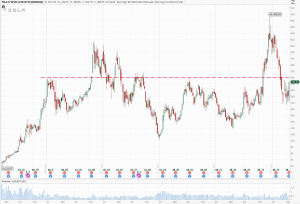Trends and Technologies to Watch – Daily Business

Digital payment systems are changing quickly and are becoming more and more important to the world economy. These technologies make transactions faster, safer, and easier, and they are now essential to everyday business.

 Photo by rupixen on Unsplash
Photo by rupixen on UnsplashReal-Time Payments and Open Banking
Real-time payments and open banks are significantly altering the handling of money in 2025. More and more people are using technologies that allow for rapid financial transactions and more flexible, customer-focused financial services. Open banking is a key part of this change, allowing banks and third-party providers to safely communicate through APIs. For instance, solutions like the Fintegrate payment cashier system are at the forefront of integrating these advanced functionalities, showcasing the practical applications of such technologies in improving transactional efficiency.
One of the best things about real-time payments is that transactions are processed immediately. More and more, people expect this kind of speed in banking transactions to be the norm, not the exception. Open banking also makes the financial system more open to everyone by giving more people access to financial services and giving customers more control over their financial data.
Mobile and Contactless Payments
The adoption of mobile wallets and contactless payments has grown post-pandemic, driven largely by the combined forces of convenience and enhanced security features. As consumers have grown accustomed to the speed and ease of using their smartphones for both online and in-store transactions, the preference for mobile payments shows no signs of waning. In fact, by 2025, it’s forecasted that digital wallet ecommerce transactions will reach USD 2.9 trillion, with contactless payments at tills expected to constitute 37% of total in-store spending.
Several things have sped up the move toward mobile and cashless payments. Putting technologies like Near Field Communication (NFC) and biometric authentication into mobile devices makes purchases safer, lowers the risk of fraud, and speeds them up. People really like mobile cards like Apple Pay, Google Pay, and Samsung Pay because they let them pay with just a tap of their phone.
Additionally, the pandemic made avoiding physical touch more appealing, which is why “tap-and-go” contactless payments are a clean choice that businesses and consumers alike prefer.
Cryptocurrencies and Blockchain
In 2025, blockchain technology will continue to be used to improve security and openness in many fields, while the use of cryptocurrencies grows in everyday life. The decentralized structure of blockchain cuts down on fraud and speeds up transactions.
Customers are using cryptocurrencies more and more in everyday business deals because they speed up payments. But this rising use also comes with many regulatory problems. All over the world, governments are trying to make clear rules that protect people and property without stopping new ideas from spreading. This set of rules is crucial for making sure that cryptocurrency can grow and become a common way to pay for things.
Emerging Technologies: AI and Biometrics
Adding biometric identification and artificial intelligence (AI) to payment systems is making them much better for customers. By looking at huge amounts of transaction data in real time, AI is significant for finding and stopping scams before they happen. This feature makes it easier to spot strange trends that could be signs of fraud.
Biometric authentication, which includes scanning fingerprints, recognizing faces, and even behavioral biometrics like typing habits, is becoming more popular because it makes the user verification process secure. This technology not only accelerates authentication, but it also makes crimes much less likely.
#Trends #Technologies #Watch #Daily #Business




